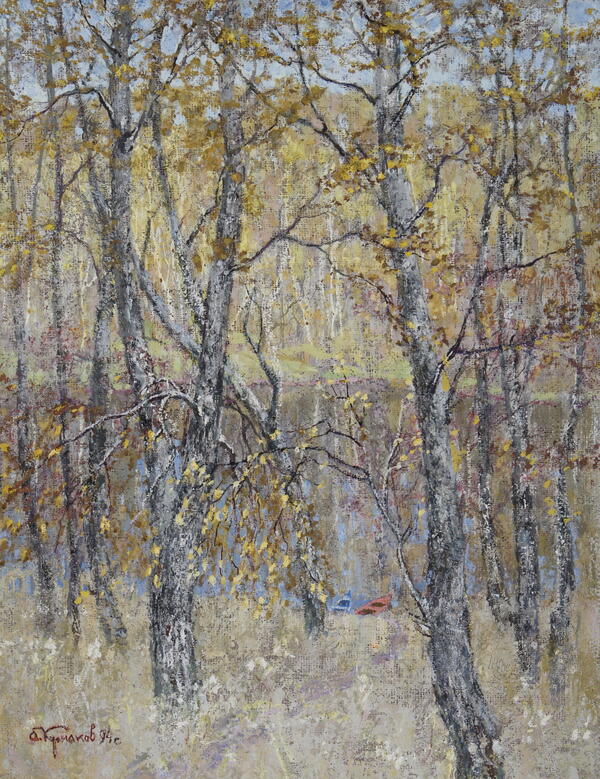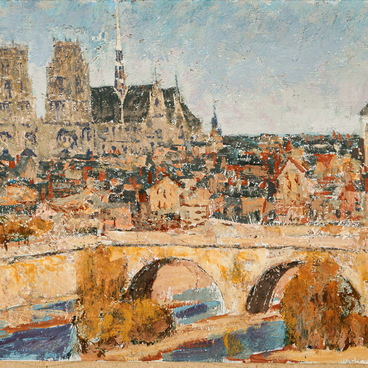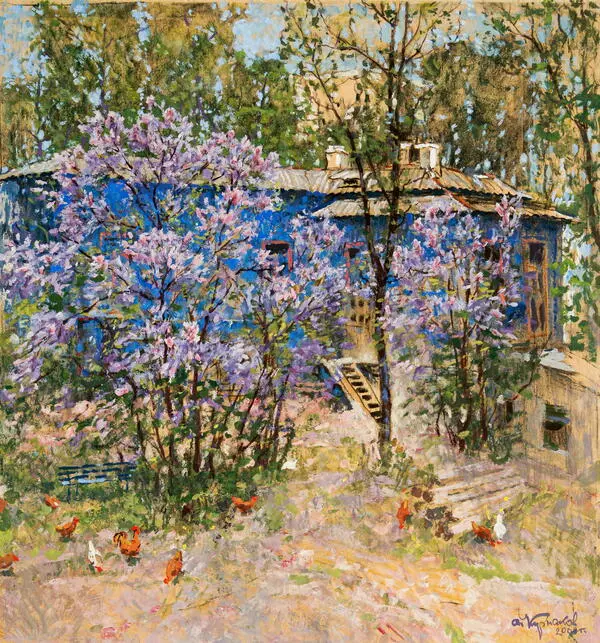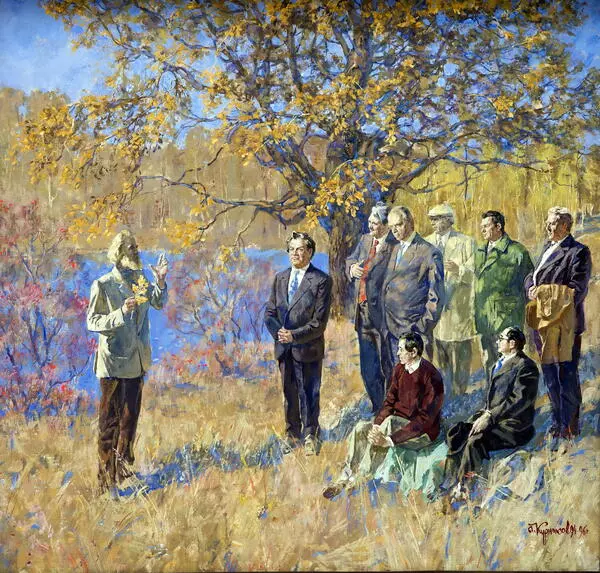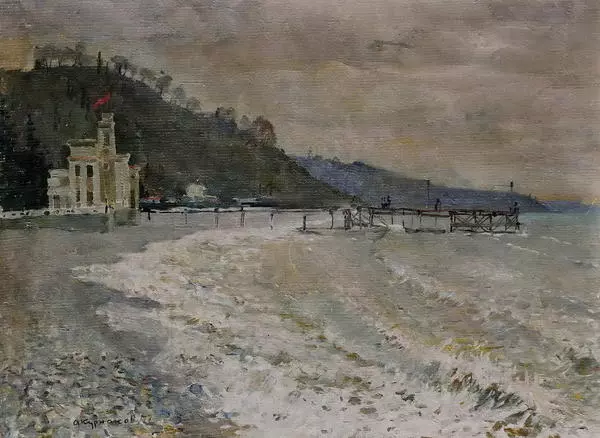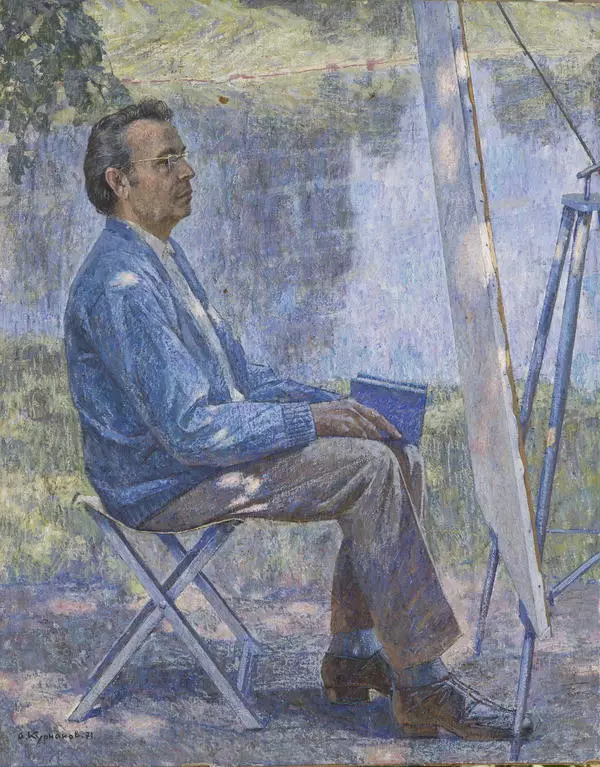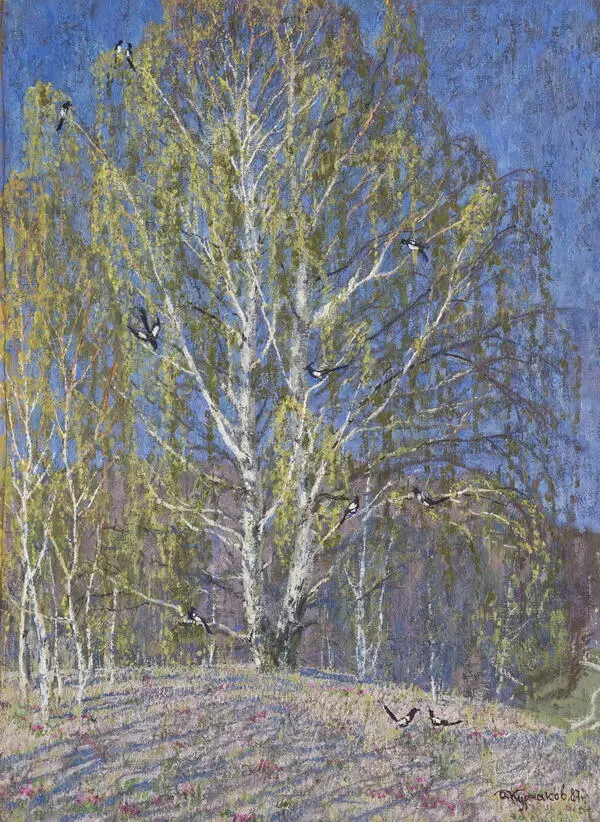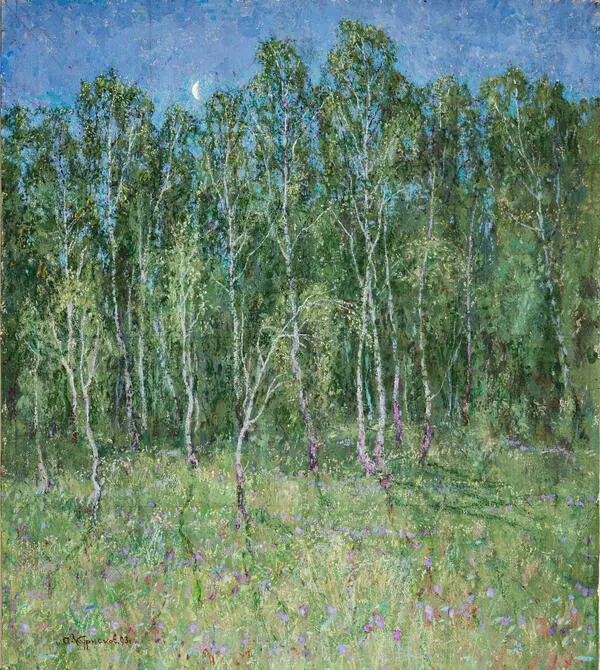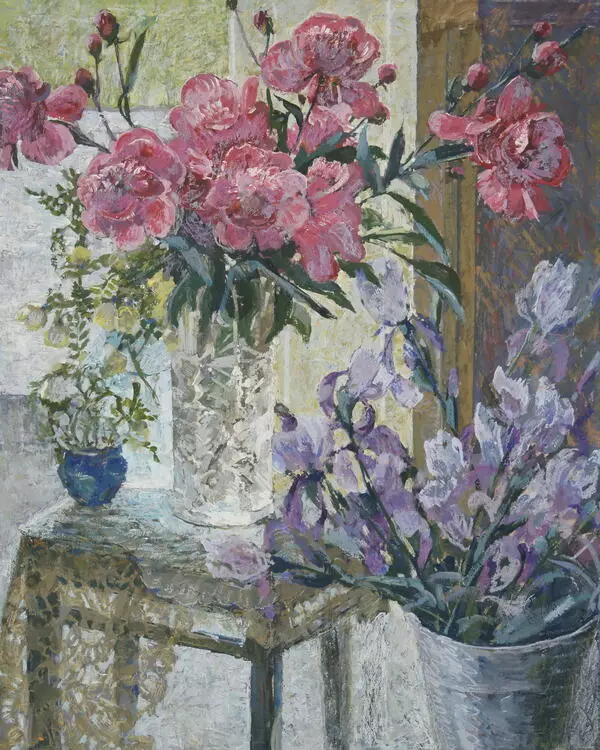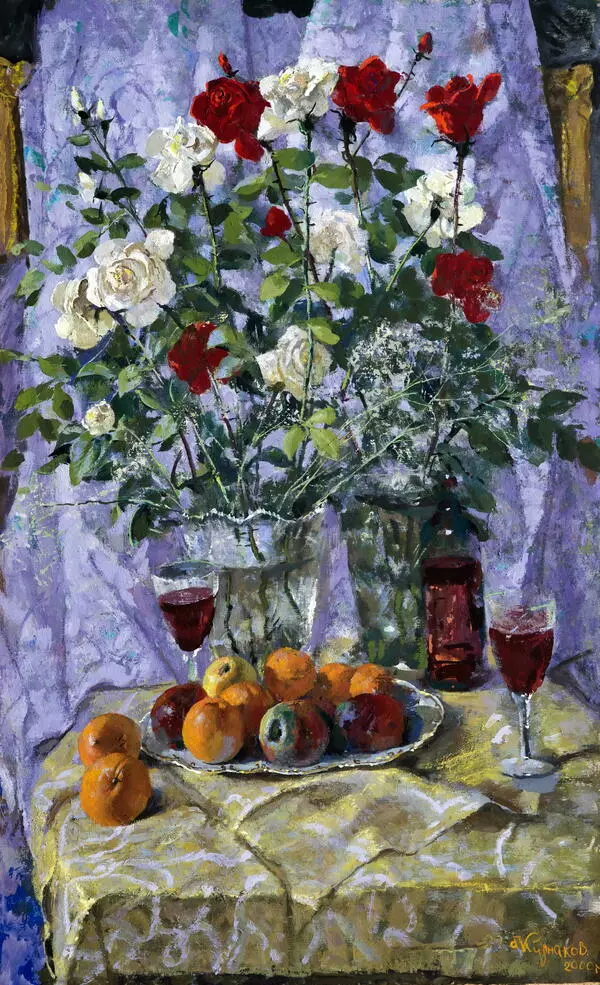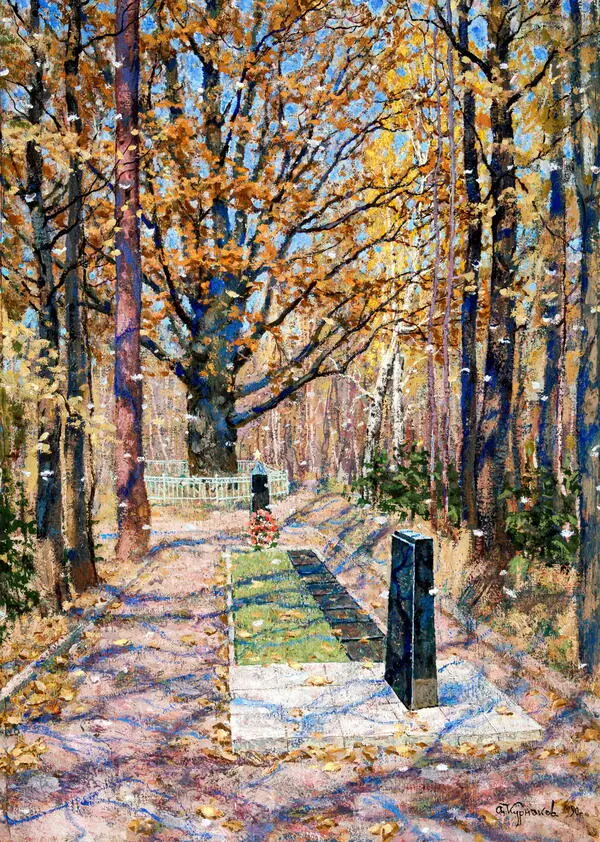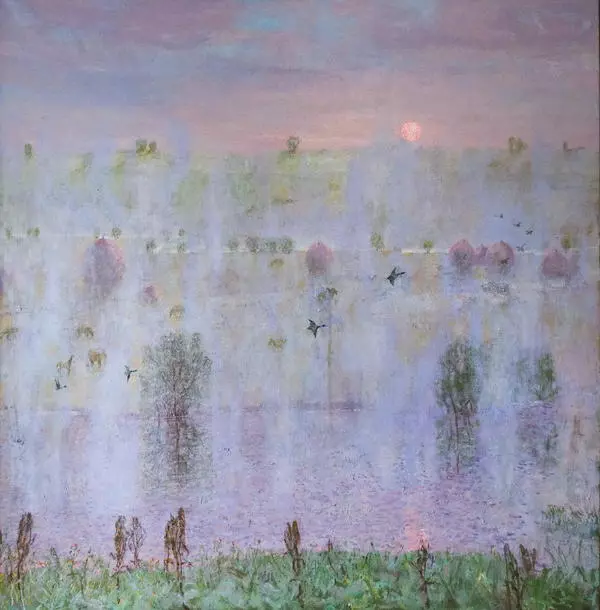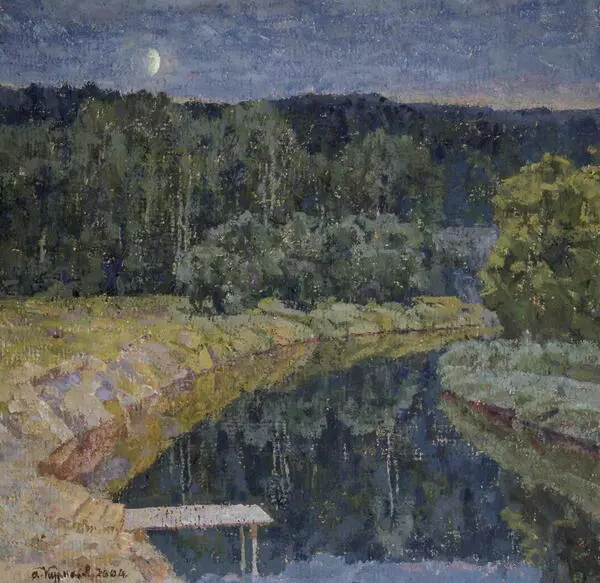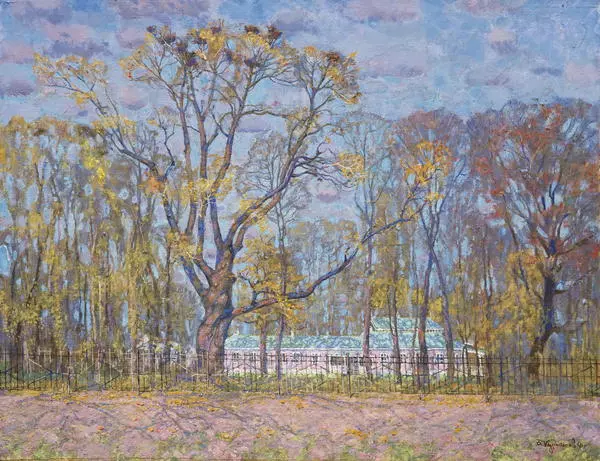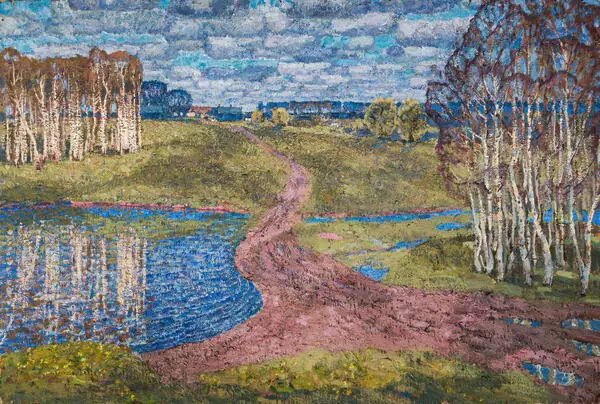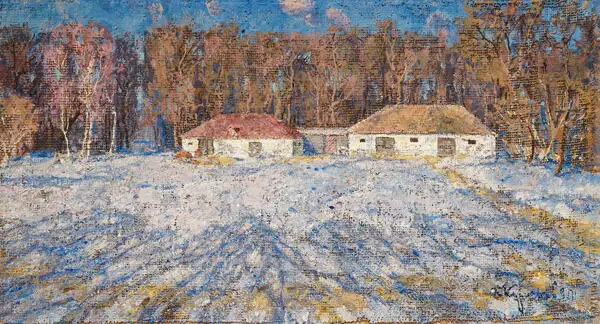“Autumn Sadness” is one of the best autumn landscapes by Andrey Ilyich Kurnakov. In 2006 (when the artist was almost 90 years old) he participated in the Third All-Russian Art Exhibition of Landscape Painting “The Image of the Homeland” that took place in Vologda. Kurnakov’s painting received an award from the All-Russian creative social organization called the Artists’ Union of Russia.
This work stands out for Kurnakov’s sincere affection for his native land, as well as his ability to distinguish between subtle aspects and capture the slightest changes in the ambiance of nature. The artist’s paintings demonstrate his high level of skill through their clear composition, the meticulously outlined details, and the ability to send a certain message to the viewers.
The “Autumn Sadness” landscape features a technique of incorporating an unusual material that Kurnakov previously worked with. He interwove coarse burlap with a thin transparent layer of paint, making the image look more relief and three-dimensional.
The canvas depicts Kurnakov’s beloved Spassky Pond. The artist had a soft spot for places associated with Ivan Turgenev, who also was from Oryol, as if there was an invisible connection between him and the eminent writer. The locations where Ivan Turgenev spent his childhood, which he visited already being an accomplished author and where he wrote many of his wonderful works — all that was an endless source of inspiration for Andrey Kurnakov, who was born a hundred years later.
The painting portrays a warm sunny day of Indian summer. Nature remains spectacular even when it fades. The artist fondly depicts the trunks and intricately curved branches of old trees in the foreground and meticulously outlines a birch grove seen in the distance on the other side of the pond. He uses another favorite technique of his: the blue autumn sky and trees are mirrored in the water surface.
The landscape expresses the spiritual and existential connection with nature, and yet its lyrical tone seems a little counterbalanced by two bright spots of blue and orange boats in the foreground which also serve as a reminder of the presence of people in this blissful perfect world.
According to the artist’s will, the painting is part of the Bunin Hall of the Memorial Studio.
This work stands out for Kurnakov’s sincere affection for his native land, as well as his ability to distinguish between subtle aspects and capture the slightest changes in the ambiance of nature. The artist’s paintings demonstrate his high level of skill through their clear composition, the meticulously outlined details, and the ability to send a certain message to the viewers.
The “Autumn Sadness” landscape features a technique of incorporating an unusual material that Kurnakov previously worked with. He interwove coarse burlap with a thin transparent layer of paint, making the image look more relief and three-dimensional.
The canvas depicts Kurnakov’s beloved Spassky Pond. The artist had a soft spot for places associated with Ivan Turgenev, who also was from Oryol, as if there was an invisible connection between him and the eminent writer. The locations where Ivan Turgenev spent his childhood, which he visited already being an accomplished author and where he wrote many of his wonderful works — all that was an endless source of inspiration for Andrey Kurnakov, who was born a hundred years later.
The painting portrays a warm sunny day of Indian summer. Nature remains spectacular even when it fades. The artist fondly depicts the trunks and intricately curved branches of old trees in the foreground and meticulously outlines a birch grove seen in the distance on the other side of the pond. He uses another favorite technique of his: the blue autumn sky and trees are mirrored in the water surface.
The landscape expresses the spiritual and existential connection with nature, and yet its lyrical tone seems a little counterbalanced by two bright spots of blue and orange boats in the foreground which also serve as a reminder of the presence of people in this blissful perfect world.
According to the artist’s will, the painting is part of the Bunin Hall of the Memorial Studio.

